Workday is completely a cloud-based software blended with various modules in a single system. Being a Single system, all the data flows through across various modules helping users to manage & customize data easily.
Hence, an integration is must for smooth passage of data from one module to other.
In this Workday Integration tutorial for beginners, you will be explained various Workday Integration concepts.
What is Workday Integration?
Workday integrations help maintain high security levels, offer insightful information, facilitate quick updates with flexible updates capabilities and create user-friendly experiences across devices – giving users a chance to personalize dashboards and gain relevant data for strategic decision-making.
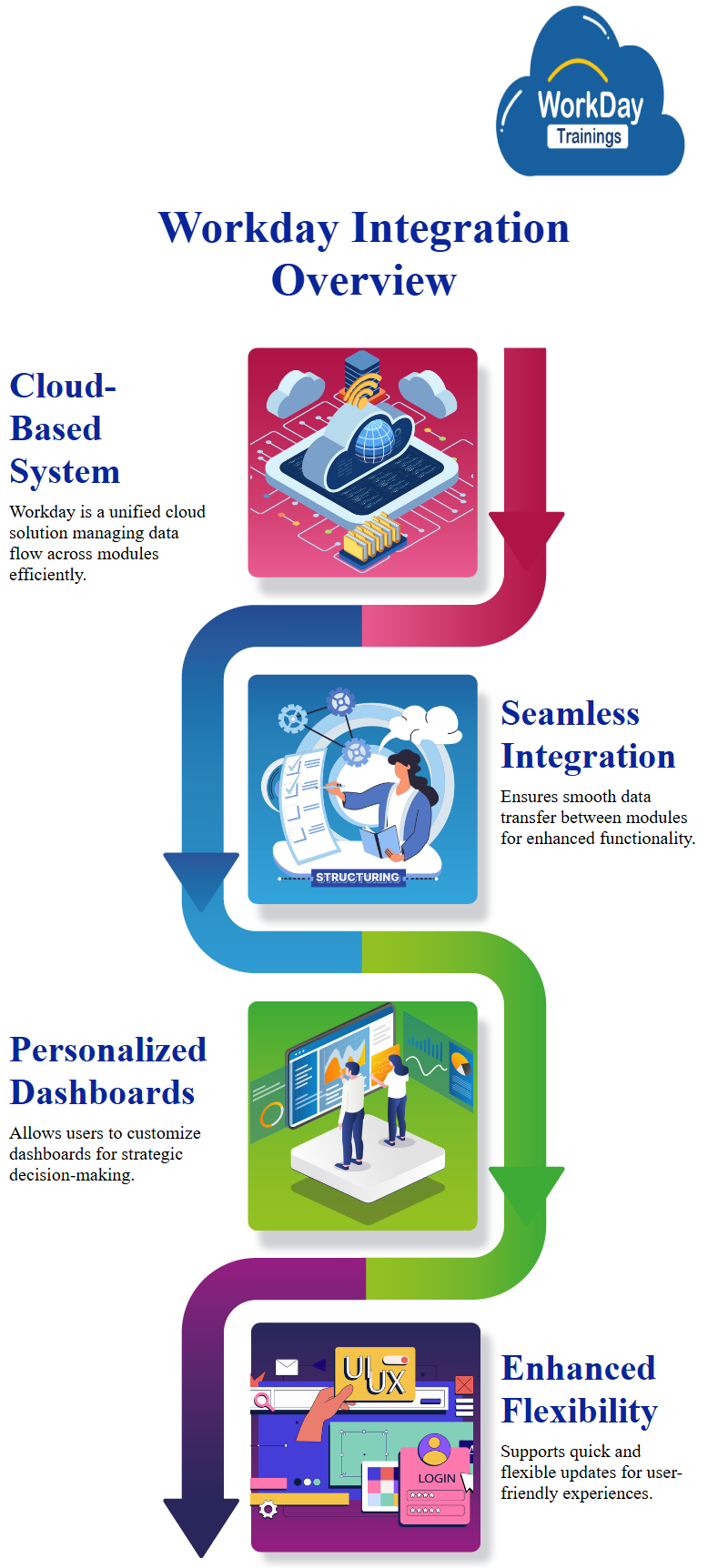
What are the types of Workday Integration?
There are three types of Integrations involved in Workday:
Enterprise Information Builder (EIB): Includes Inbound & Outbound
Workday Integration Studio: Includes API Integrations
Cloud Connect.
What are the prerequisites required to process Workday Integration?
You must understand XML & XSLT to work on Workday Integration. XML plays a major role in building reports and enabling webservices. While, XSLT is used in transformation process i.e. XSLT converts XML data from one form to another.
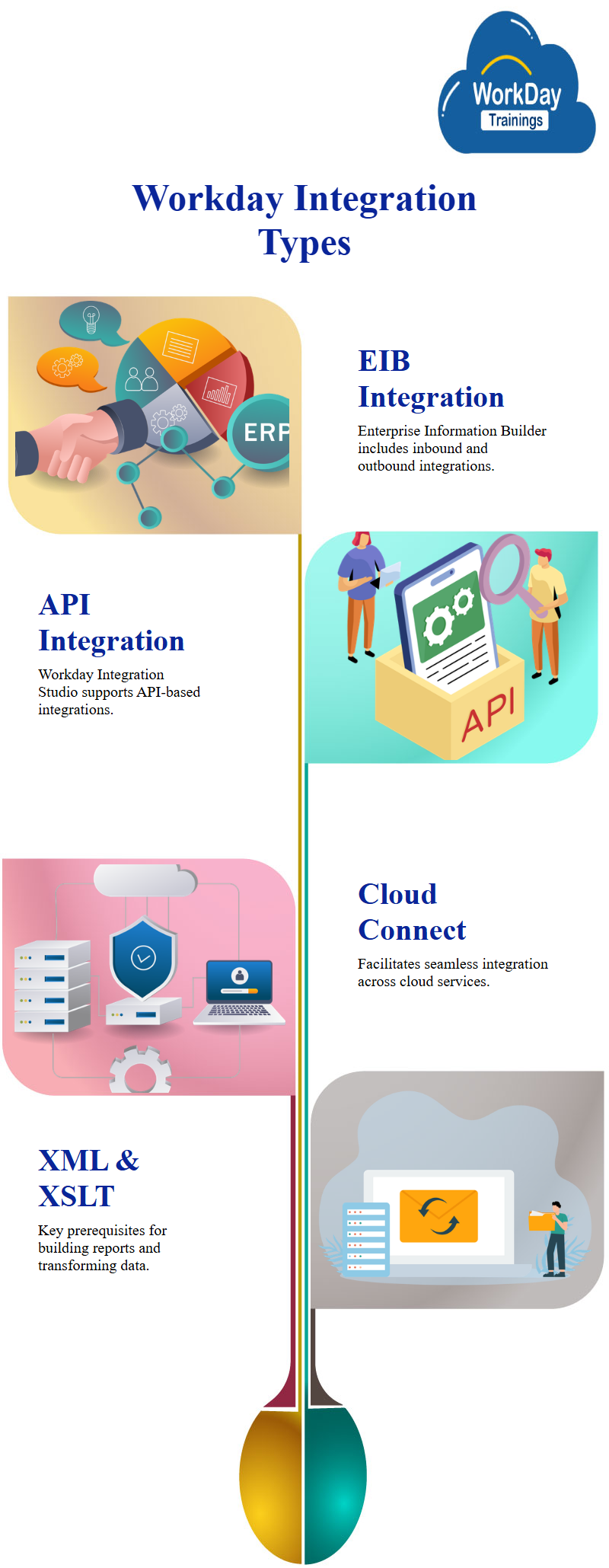
What is Workday Integration Web Services?
Web services are essential for connecting different systems, such as workday and Oracle Fusion. They provide a bridge between these systems, allowing for unlimited data transmission and transmission.
A workday web services is an entity that helps build a connection between two endpoints, allowing for seamless communication and data transfer.
A web service is not restricted to a specific amount of data, but allows for unlimited time. Once the connection is established, the workday integration remains there, allowing for unlimited data transfer.
The endpoint of the workday web service is where the data is to be sent, and once the data is sent, it is not enough. Conversion is necessary before the data can be transferred.
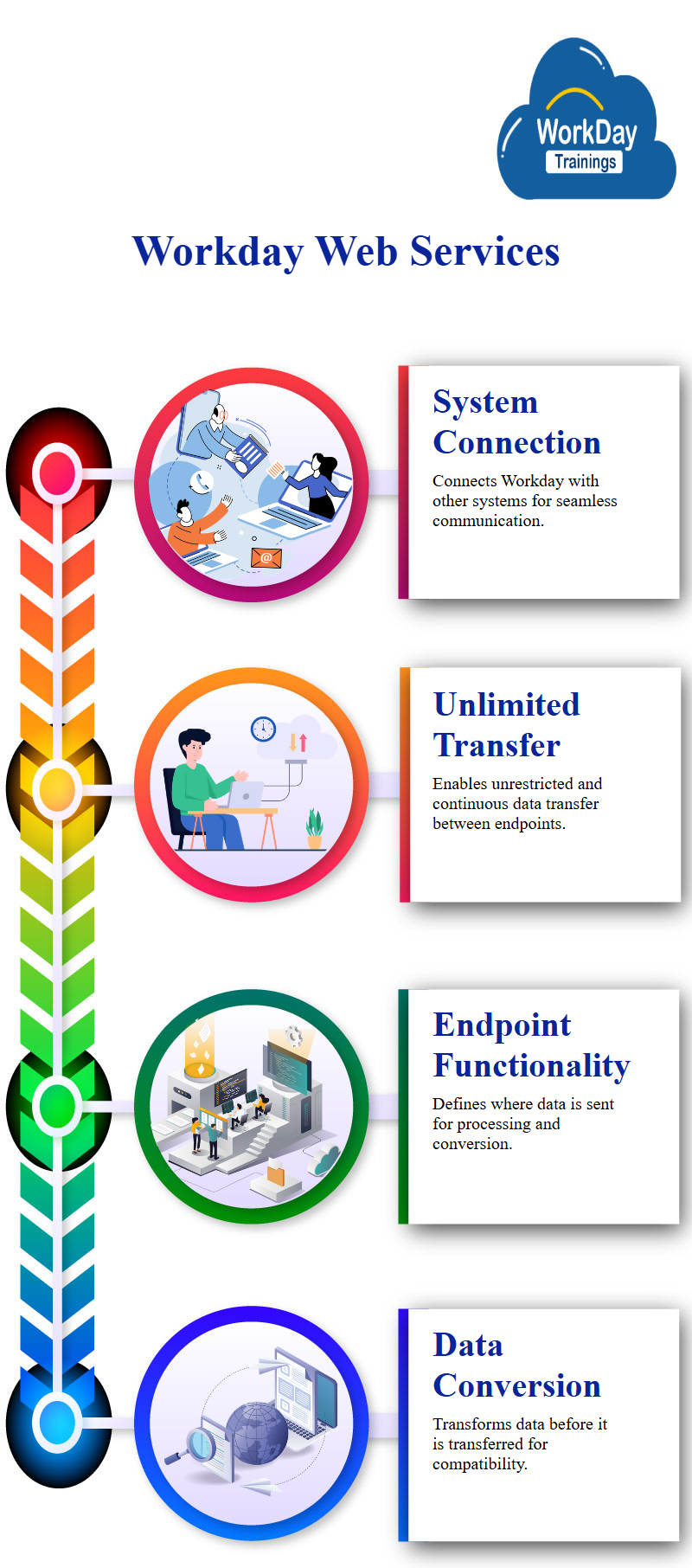
Workday web services are essential for managing various operations, such as creating locations, supervisory organizations, job profiles, and hiring employees. These services are available in three main categories: workday finance, workday student, and human resource.
The structure of the web service provides important information such as previous system compensation history, request bonus payment, request compensation change, and request workday compensation change response.
Business Objects & Field Types:
Workday is a SaaS product that provides a business object, similar to a table in a database. It allows users to store and retrieve data from Workday, providing a way to store and retrieve data from the system. Within a workday business object, users can access fields related to the workday business objects, data source, and workday reports.
Workday does not allow users to create tables, but it provides a similar format with field names, descriptions, and field types.

There are eight types of field types in Workday, including numeric, Text fields, and Boolean.
Boolean fields are the most commonly used field type, with values ranging from zero to one or two.
What are calculated fields in Workday?
Calculated fields are customizable field definitions associated with business objects in Workday that utilize data in this platform.
Calculated Fields make sure the Report Writer transfer the data within Workday.
What is Workday EIB Integration?
Workday EIB is the first type of integration used by workday organizations, offering a variety of unique workday features that no other workday integration can provide. It is called enterprise interface build-up and can use Workday reports converted into Workday web services as a source of data to send data outside of the system.
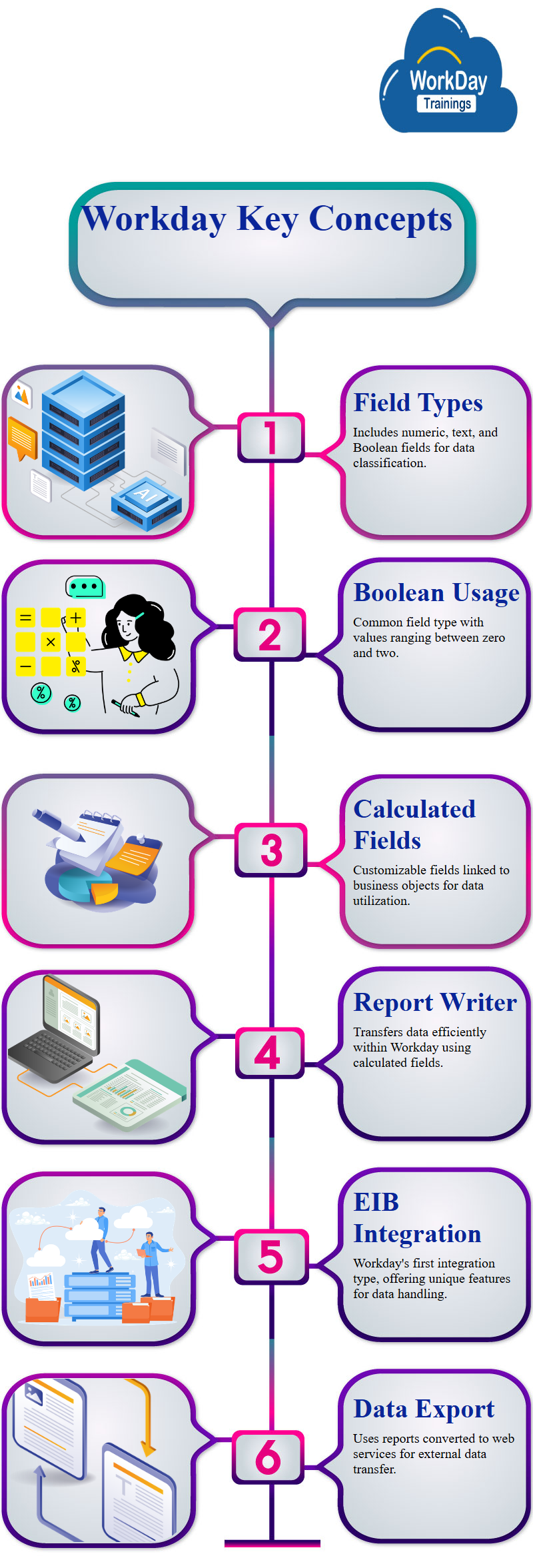
What are Workday Core Connectors?
Workday core connectors, also known as template-based connectors, are crucial for connecting with external systems. Workday provides templates with different services associated with them, making it essential to select the right service when selecting the template.
Building a Core Connector:
The process of building a Workday Core Connector involves four steps:
1) creating the connector,
2) connecting with the external system,
3) getting the output file,
4) building a document transformation, and
5) putting in an accessibility code.
To create a core connector, follow these steps:
1) create the workday integration system.
2) select the template,
3) search for the core connector worker, and
4) Enable the data sections.

Workday Security:
In Workday, security is a complex process that involves two parts: data security and business process security policy. Security is given to a security group, which is created based on workday roles and tasks performed by employees. There are two main types of workday security groups: role-based and user-based.
Workday Integration Studio:
Workday Integration Studio covers mostly web services & the Workday Integration API. The use of three types of services, including soap-based web services, REST APIs, and outbound integrations. The first type is soap-based web services, which are used for creating reports and receiving output as input. The second type is REST APIs, which are used for creating reports and obtaining report output.
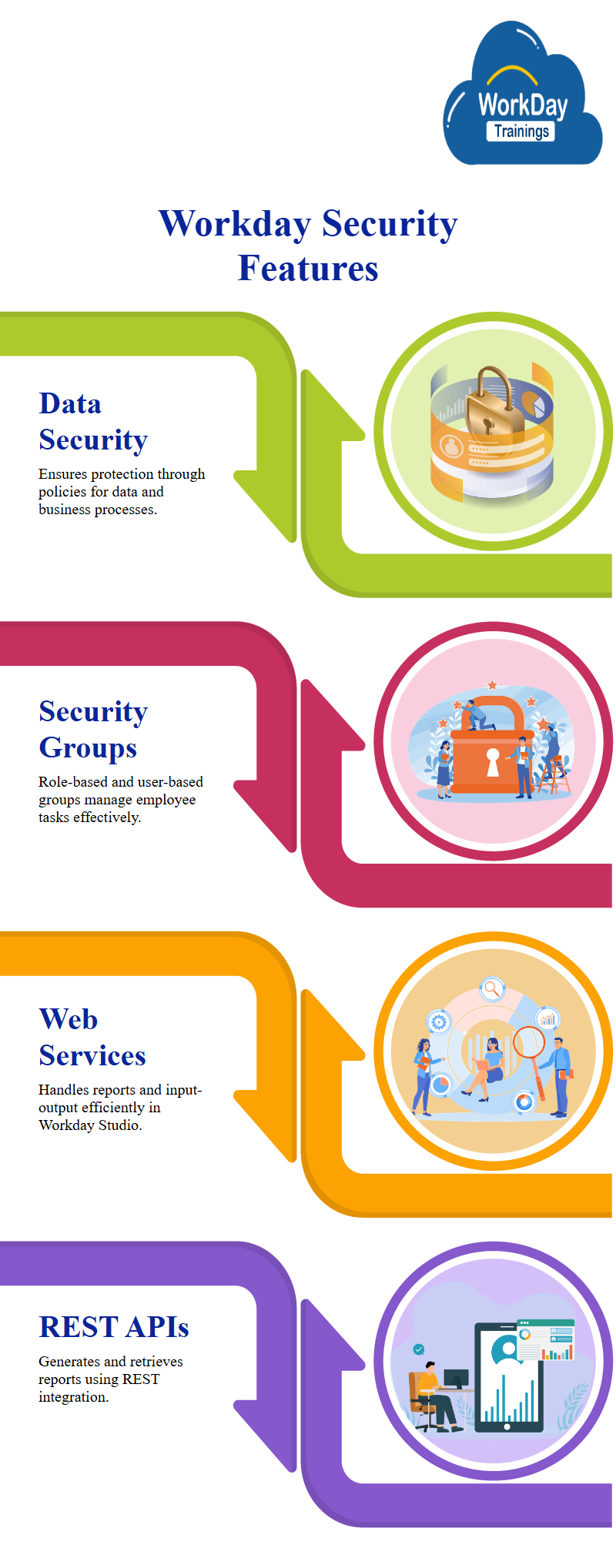
Workday Integrations takes place with the below-mentioned software:
- Salesforce workday integration
- Workday integration with sap
- SAP workday integration
- Workday integration tools
- Okta workday integration
- Workday integration cloud
- Workday integration architecture
- Mulesoft workday integration
- Workday integration servicenow
- Jira workday integration
- ADP workday integration
- Workday integration with salesforce
- Netsuite workday integration

Harsha
New Technology, let's explore together!